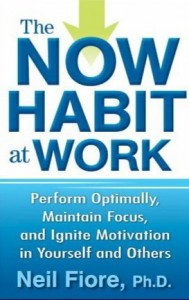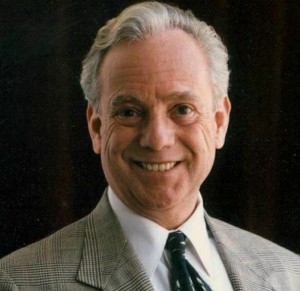The Seven Essential Strategies for Performing Optimally at Work
What book is on your bedside table? One of my newest to help keep me on track for 2011 is written by one of my professional colleagues at the National Speakers Association of Northern California. The Productivity Expert Dr. Neil Fiore gave me permission to give you a taste of it!

Start today to challenge your old beliefs, habits, and defaults and begin to replace
them with strategies that make you more productive and allow work-life balance.
Principle One: Shift from your current habit to corrective action.
The fastest way to change is to link your current behavior to corrective action: do the opposite of what you’re doing now; link your habit to a new, corrective action; let the symptom trigger the solution; direct your attention to what you can do now as opposed to worrying about the past or future. Shift to corrective action within seconds. Now that’s effective time management!
Principle Two: Shift from struggle to ease: Use the law of reverse effort.
Use struggling as a sign that you’re going in the wrong direction. Stop the old belief, “You have to try harder and put in more time.” Replace with: “If you’re pushing on a door and it doesn’t open easily, it’s probably a pull-door.” Life has hinged the doors––and most seeming problems––so that they open easily. Stop trying so hard and go in the opposite direction.
Principle Three: Shift from self-focus to task-focus.
One of the fastest ways to increase productivity is to shift from self-criticism in one breath—like a karate shout—to a task-oriented focus; from “I should have” to “Do this now.”
To be an effective manager of yourself and others replace “Why did you spill the milk?” with “How quickly can we clean it up?” Point your brain toward the task that solves the problem. Reward all steps in the right direction. Catch yourself doing something right.
Principle Four: Shift from “I have to finish” to “I choose to start.”
Ineffective managers tell their workers that they have to do something they don’t want to do, which triggers resistance and rebellion. “You have to” means “you don’t want to, but I’m forcing you to do it anyway” and “if you don’t do it, something awful and painful will happen.”
This communicates: “You should resist and rebel against something they don’t want to do.” “You have to” creates fatigue, distractions, depression, and procrastination as ways of passively resisting a victim role. For every child saying, “But I don’t want to,” there’s a parent, teacher, or boss saying, “You have to.” Instead, try “Yes, of course you don’t want to. You don’t have to want to. You can choose to do what gains you the greatest long-term reward.”
Principle Five: Shift from your future goal to taking action now.
Shift from “Finish an overwhelming 1,500-hour project” to “Start for 15 minutes.” Your goals are in the future—a thousand steps, thousand miles, or 20 pounds away from where you are now. If you want to write a book, learn to play piano, lose 20 pounds, or run a marathon, ask yourself “When can I start? What can I do now?”
As an effective self-manager of your body and mind, you tell your workers when, where, and on what to start and when they will be paid and rewarded. You don’t have to keep reminding yourself: “You have to finish.” Focus on when you can start. The last time you start is when you’ll finish.
Principle Six: Shift from struggling with just your conscious mind to using the power and ease of your subconscious genius.
One of the most effective ways of doubling your productivity while reducing stress is to access your subconscious genius, right brain, or “night shift mind.” These parts of your brain work better when the conscious “you” goes to sleep or gets involved somewhere else and let’s go of struggling as if alone.
Writers, inventors, and entrepreneurs have learned to put their struggling conscious minds to sleep so their subconscious night shift can do a little daydreaming and night dreaming to make major breakthroughs and discoveries.
Expressions such as “I have a hunch,” “I can’t remember her name, but it’ll come to me” and “Let me sleep on it” indicate that you are relaxing the struggle of your conscious mind and its consciously controlled muscles in order for something to come to you from your larger brain and resources. Now that’s using your (whole) brain!
Principle Seven: Shift from reacting to choosing how to act.
The survival functions of your brain react instantly to any signs of danger. Like an efficient computer, your brain gives you your favorites and survival reactions first. It’s up to you and your human brain to choose when to override them to fit your current skills, knowledge, values, goals, and opportunities. As a human being, you are not stuck with what first occurs to you out of habit or efficiency.
You can choose how to act. Remarkably, you can start to break a habit or addiction in 10 to 15 seconds or two to three breaths by replacing your initial reactions with healthy alternatives. When you don’t give in to fear or grab for sugar or cigarettes in the first 10 seconds of experiencing discomfort, your brain switches to problem solving rather than speeding down the same track leading to the same destination of avoidance and procrastination.
Whenever you replace your primitive and outdated defaults by choosing to face fears and self-doubts, you build new neural circuits and your self-leadership credentials with your brain and body.

©2010 Neil A. Fiore, PhD. All rights reserved. www.neilfiore.com and ne**@*******re.com

Many thanks for providing really informative posts on your site. How can I subscribe to it?
You can subcribe to Fripp blog by the RSS feed. Or come back every few days! Thanks.